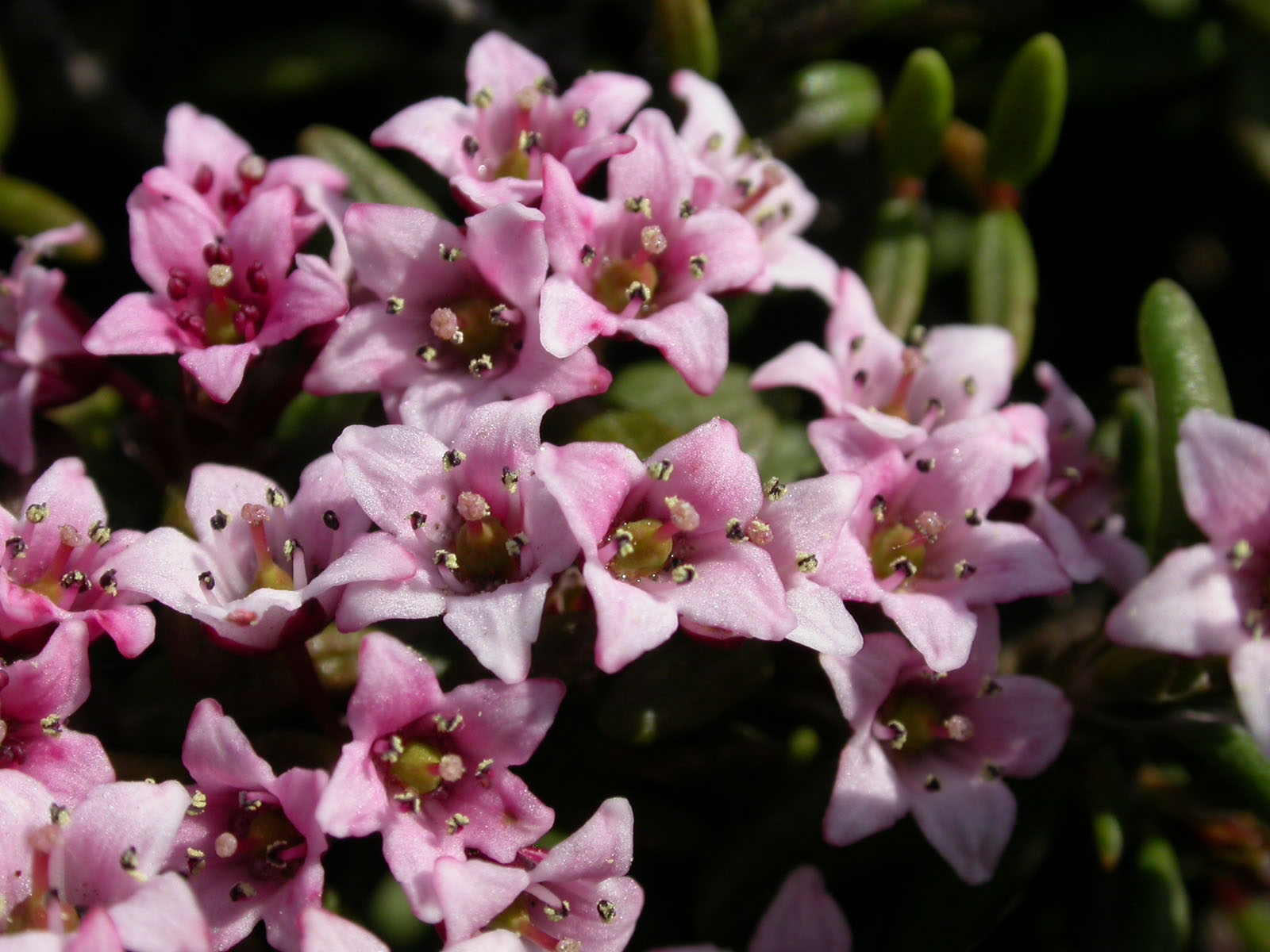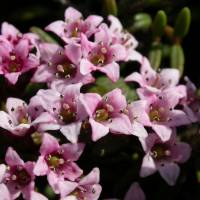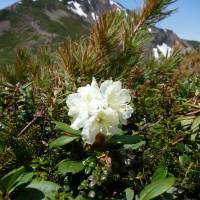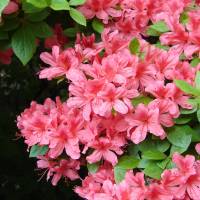It seems that many of my natural-history musings revolve around unprocessed thoughts that emerge while I soak in some rural hot spring or other. I have watched mammals, birds and insects from the bath and, surprising though it may seem, I have even contemplated the behavior of plants while I have been enjoying a soak. Yes, I did say "behavior."
Our attention spans are so short that we rarely give a thought to the antics of plants, which generally happen in time frames so slow they bore us. We don't have the patience to watch them grow, yet marvel at and revel in them once they have appeared. Their slow pace of life somehow tricks us into believing they are inactive, yet nevertheless they creep and climb, grow into towering vertical forms, and by means of their seeds they drift, waft and glide. Their buds burst, their leaves and flowers unfurl, and their branches and twigs stretch outwards — that is all behavior. Plant behavior is no less fascinating than animal behavior but requires very much more patience on our parts. I have noticed over many early mornings spread across many winters the strange behavior of the shrubs growing above the hot-spring pool at Kambayashi Onsen (yes, the very same one where I noticed the head-warming behavior of the koi described in my last column).
On cold winter mornings, with accumulating snow, the clusters of finger-size leaves on the shrubs above the pool seemed to hang listlessly as if limp-wristed. The glossy surfaces seemed somehow dulled, the margins curled in underneath. To be entirely anthropomorphic, they seemed depressed. On milder days with sunshine, it was as if they had shrugged off some malaise, tightened their "tendons" and flexed those same "fingers" slightly outwards, giving a hint of the broad span that would be revealed over the weeks and months ahead. What splendid shrubs they would be to photograph in a time-lapse sequence. To see those leaf clusters fluttering, opening and closing just a little each day during the quiet phase of winter, and then to see them stretch outwards for warmth — spreading, reaching for the light and rousing as if from a long sleep — as spring approaches, would be marvellous. After a long winter dormancy, tight buds, like bank vaults for the beautiful, loosen slowly in spring to reveal gorgeous splashes of color and emerge eventually to show off some of the most splendid of wild flowers, rhododendrons. These rhododendrons, a name derived from ancient Greek meaning "rose trees" by the way, are members of the heath family, the Ericaceae. This is the same family to which heathers belong, and many of them favor poor or acidic soils.
Although plants in the genus Rhododendron are native to a broad swath of the world, by far the highest species diversity occurs in the foothills and on the slopes of the Himalayas ("abode of snow" in Sanskrit), especially in Nepal, Bhutan, Uttarakhand and Sikkim in India, and Yunnan and Sichuan in China.
Growing up in the U.K., I knew rhododendrons to be highly invasive, showy shrubs that overwhelmed woodlands and gardens by shading out and replacing the natural understory. I later discovered Victorian plant collectors had once scoured Asia, especially the Himalayan region, for such plants. They brought them back to their home country only for them to wreak havoc on the environment in the absence of natural competitors.
Springtime in the Himalayas is beautiful. Splashes of white magnolias and cream, golden-yellow, pink and red rhododendrons in the canopy and the undergrowth of the lush, deep green of the forest enliven the montane scenery in a gorgeously unexpected way. Few sights can be as impressive as ranks of mountain ridges carpeted with native forest and splashed with color. But one doesn't need to travel so far afield as the Himalayas to witness plants delivering such a delightful palette. After the Himalayas, the next best region of the world for this gorgeous group of plants is East Asia, with areas of significant rhododendron diversity thriving in the mountains of Taiwan, the Korean Peninsula and especially here in Japan. We are living in a rhododendron hot spot!
On my first early summer train ride up the wooded Kiso Valley in southwestern Nagano, with the North Alps to the west and the Central Alps to the east, I was deeply impressed by the wonderful and mysterious dashes of color in the forest. Only then did I realize that Japan is home to some of the most gorgeous rhododendrons and their close cousins, azaleas, in the world.
Of course, you can visit almost any park or garden in the country and find neatly trimmed mounds of azaleas and rhododendrons lining rock gardens by the dozen. While not wishing to denigrate those garden varieties, I wish to focus on the wild species of azaleas and rhododendrons that brighten Japan's forests from Yakushima in Kagoshima Prefecture to Hokkaido in the north. Japan does not have the largest tree-forming species that can be found in the Himalayas, but it makes up for a lack of stature with diversity. Of the approximately 1,000 species of rhododendrons worldwide, I was told recently that Bhutan has approximately 46. Here in Japan, though, we have twice that number with almost 100 species, many of them endemic to particular mountain regions of the country. The long-isolated cluster of volcanoes in southern Kyushu that form the Kirishima mountains, for example, have their very own unique azalea, from which many cultivars have been derived. Some of them, such as Rhododendron kaempferi, are redolent of the past and bear the names of early naturalists.
To find one of my favorite azaleas, one must climb high into the mountains of central Japan or Hokkaido. There the alpine azalea, a low mat-forming plant, puts out tiny pink clusters of flowers, each just a few millimeters across. In the far northern Arctic tundra, this species is so abundant that despite the tiny size of each flower, it appears as if the whole plain is carpeted in pink. Fortunately, urban rhododendron seekers hardly need to worry, as azaleas and rhododendrons are planted in numerous gardens and are also the focus of garden festivals such as the Tsutsuji Matsuri (Azalea Festival).
Wherever you are in Japan, this is the season to revel in them. While the blooming season for some varieties may start as early as mid-April in southern regions and the lowlands, others bloom later further north and at higher elevations, with many coming to their peak in June, July and even August.
Each spring, travel agencies in Japan are overwhelmed by the volume of overseas visitors coming to this country for cherry blossom tours. To my mind these visitors are grasping at a cliche. Of course, the palest of pinkish-white froth on bare branches in March or early April is stunningly beautiful, and yet there is no surprise in it — it is entirely predictable. Not so the magical moment of turning a corner on a trail and encountering a sudden splash of pink, red or gold amongst the greenery. Perhaps cherry blossoms are for the eager-to-revel masses whereas rhododendrons are for plant aficionados, but somehow I feel travel agencies in the country are missing one of the great colorful highlights of Japan's natural year. Do take the opportunity to go out and enjoy them in the weeks ahead.
Naturalist and author Mark Brazil has written Wild Watch for more than 30 years. He also organizes and leads wildlife, bird-watching and photographic excursions around Japan. Mark's latest book, "The Nature of Japan: From Dancing Cranes to Flying Fish," is now available from www.japannatureguides.com or from the Junkudo Ikebukuro bookshop.






















With your current subscription plan you can comment on stories. However, before writing your first comment, please create a display name in the Profile section of your subscriber account page.